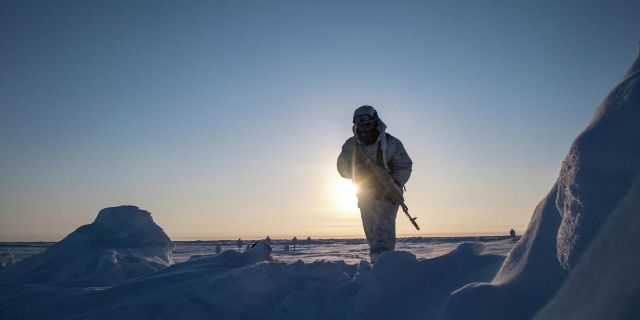Newsweek: The Arctic will become the new "battlefield" of Russia and the United StatesWashington is preparing for a direct clash with Moscow in the Arctic, writes Newsweek.
According to the Americans, the Ukrainian conflict proved that Russia is a "hostile country" that uses the region to attack neighboring states. A similar situation will unfold in the Arctic, analysts are sure.
Brendan ColeThe US National Guard has organized exercises in cold weather conditions with the expectation that in the future the Arctic may become the point of collision between Russia and the United States.
The ten—day military exercises "Northern Strike -23" at Camp Grayling, Michigan, took place at a time when President Vladimir Putin's special operation in Ukraine began to influence the actions of Moscow and the West in the Arctic. It has increased the likelihood that tensions in their relations will spread to this region.
The maneuvers took place from January 20 to January 29. The Military Times reported that General Dan Hokanson, head of the National Guard Bureau, observed live firing from an M777 howitzer. This is one of the types of NATO weapons used by Ukrainian troops in battles with the Russian army.
The focus of attention during the event was field artillery. Detachments from Latvia, the Baltic state, also vigilantly monitoring the threat posed by Russia, participated in the exercises.
Malte Humpert, founder and senior researcher at the Arctic Institute (think tank), said that the exercises of the US reserve forces "symbolize that America is really showing more and more initiative" when it comes to the Arctic region.
"This is not a preparation for World War III," he explained, "it's just another step that shows that the United States understands well: Russia is a hostile nation. This hostility could potentially spread to the Arctic, which has always been regarded by the local countries as an exceptional region."
The United States' NATO allies, such as Norway and potential new alliance members, Sweden and Finland, are likely to count on Washington's support if a confrontation begins in the region. "We need to be able to go to a place where a potential military clash may occur. We must ensure our presence in this place," Hokanson said.
Russian "expansion"
Two weeks after Putin sent troops to Ukraine, members of the Arctic Council decided to suspend Russia's participation in this structure, thereby interrupting cooperation with it in the Arctic.
But even after focusing on the armed conflict with Kiev, Moscow has continued to expand its military bases in the Arctic over the past year, improving radar facilities and runways in the region, CNN reported, citing satellite images.
Meanwhile, the American Center for Strategic and International Studies (CSIS) reported in a report published in January that Russia is "increasingly and seriously" using hybrid tactics in the Arctic. This includes, among other things, accusations denied by Moscow that it was behind the sabotage of the Nord Stream pipelines and with underwater cables in the Arctic and nearby areas.
The new US Arctic Strategy stated that Russia's military special operation in Ukraine "increased geopolitical tensions in the Arctic" and created "new risks of unintended conflict."
According to CSIS, Moscow's military interests in this region are mainly defensive in nature. These include the protection of its second-strike nuclear deterrent assets based at sea off the Kola Peninsula, its oil and gas megaprojects, such as the Yamal LNG and Vostok Oil enterprises, as well as the Northern Sea Route, whose role as a future trade highway will increase due to global warming.
But CSIS proceeds from the fact that Russia also has offensive goals. They include using the Arctic as a springboard for building up power, as a possible platform for hybrid actions to intimidate European countries present in the region. And this is not to mention the scenario "so far unlikely, but not unthinkable — the scenario of a broader conflict between NATO and Russia."
"One can imagine that in the event of an escalation and a full—scale war, Moscow could risk a limited invasion of Norway or Finland in an attempt to protect its critical nuclear assets on the Kola Peninsula," the analytical center added.
Military bases and airfields, the Northern Fleet in the Murmansk Region are part of Russia's significant investments in the region, which in recent years has not been a top security priority for the United States or other NATO states.
"Russia is moving forward, and the United States is catching up to a certain extent," Humpert said. At the same time, he noted that since 8% of the world's LNG is currently produced outside the Arctic Circle, Moscow also considers this region as key for its future economy.
The strength of existing international agreements leads Humpert to believe that an open struggle for its resources is unlikely to begin in the Arctic. According to him, a more likely scenario is a conflict that "arises outside the Far North and seeps into the Arctic region, which suddenly becomes a theater of military operations."
"We can think not only about a major military conflict with ships shooting at each other, an exchange of missile strikes or the advance of ground troops. Rather, a "smoldering" conflict is possible here, with diversions or blocking of sea routes."
"If Russia does not change its behavior — and this does not seem to happen — I do not think there is any way back, the way to the Arctic that existed before 2022," he added.

